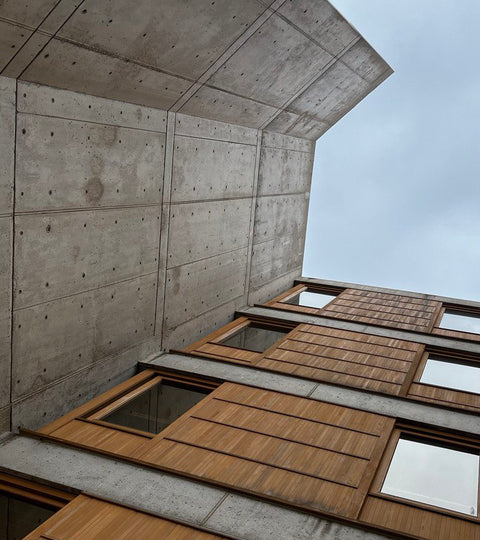Louis Kahn: Master of Concrete Architecture - Unveiling the Salk Institute Project
Introduction:
Louis Kahn, an eminent figure in the realm of architecture, left an indelible mark with his innovative use of concrete. Among his numerous iconic projects, the Salk Institute stands as a prime example of his mastery in incorporating concrete into his designs. In this blog post, we will delve into Louis Kahn's brilliance as a concrete architect and explore how he employed this versatile material in the creation of the Salk Institute.

Louis Kahn: A Pioneer of Concrete Architecture:
Louis Kahn was a visionary architect renowned for his distinct design principles and unwavering commitment to craftsmanship. Born in 1901, Kahn embraced modernist ideals while emphasizing the inherent beauty and functionality of materials, especially concrete. His innovative approach to concrete architecture earned him global recognition, and his works continue to inspire architects and enthusiasts to this day.

The Salk Institute: A Concrete Marvel:
Situated in La Jolla, California, the Salk Institute serves as a testament to Louis Kahn's ingenuity and his affinity for concrete. The institute, a collaboration between Kahn and scientist Jonas Salk, was designed to foster scientific research and collaboration. Kahn envisioned a space that would embody a sense of harmony and intellectual pursuit, and concrete played a pivotal role in bringing his vision to life.

Concrete as a Material of Choice:
Kahn viewed concrete as a living material with inherent character and strength. He believed that its plasticity and ability to mold into any form allowed for the creation of monumental yet graceful structures. In the case of the Salk Institute, Kahn utilized exposed concrete as the primary building material, showcasing its raw beauty and resilience.

The Aesthetic and Structural Marvels of Concrete:
Kahn's mastery lies in his ability to transform concrete into an aesthetic and structural marvel. The Salk Institute features monolithic concrete walls, clean lines, and geometric precision, creating a sense of timelessness. The integration of concrete with the natural surroundings emphasizes the institute's connection to its environment.
Concrete also played a crucial role in addressing the climatic challenges of the site. Kahn employed thick concrete walls to provide insulation, reducing the need for artificial heating and cooling systems. Additionally, the use of concrete allowed for the creation of large, open spaces and grand entrances, fostering a sense of openness and grandeur.

The Poetics of Light and Shadow:
One of Kahn's trademark design elements was his masterful use of light and shadow within his concrete structures. At the Salk Institute, he incorporated narrow, linear skylights known as "light wells" that cast an ethereal glow, emphasizing the interplay of light and shadow. These strategically placed openings create a dynamic and ever-changing environment, evoking a sense of contemplation and wonder.

Conclusion:
Louis Kahn's innovative use of concrete in the Salk Institute showcases his extraordinary ability to elevate a utilitarian material into a work of art. Through his careful manipulation of form, light, and shadow, Kahn transformed concrete into a material that embodies strength, beauty, and timelessness. His legacy continues to inspire architects and admirers worldwide, reminding us of the transformative potential of concrete in architecture.
Note: Some of the content in this blog post may have been using AI.


0 Comments
There are no comments yet. Be the first one to post one!